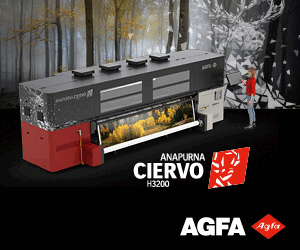Dennis Leblanc, Senior Business Development Manager for North America at Drytac, discusses the importance of the correct preparation of surfaces prior to installing wall graphics.

If you have encountered problems installing wall graphics, then you are certainly not alone. Given the hundreds, if not thousands, of different paint formulations, the advent of low and no VOC paints, as well as pesky terminologies such as ‘anti-stain’ or ‘washable’, it is almost impossible to look at a painted surface and know that you will be successful with your installation project.
With this in mind, what steps can printers, graphics specialists and sign-makers take to make life easier when it comes to installing applications?
A good place to start with any installation is to test the adhesion first, with many tools and tricks out there to help. However, this is only part of the equation, with plenty of other factors to take into consideration before you can begin installing your graphics.
Surface preparation is key to the success of any installation. You should ensure the wall is washed and properly prepared for adhesion. It is also a good idea to find out when the wall surface was last painted, with most paints taking up to 31 days to fully cure. Of course, curing paints will off-gas in this period and off-gassing can create havoc with applied graphics. Then there is the paint itself; what type of paint was used to cover the wall? There is usually some leftover paint in the supply cupboard that could provide the answer, while a quick Google search on the product will provide further insight as to what issues you might encounter when applying graphics on top. Keep an eye out for indicators such as low or no VOC, washable, scrubbable and anti-stain, all of which in essence mean the product is engineered to not have things stick to it.
Of course, these are perfect-world scenarios that make life easier for the installation team. However, the reality is that most clients will have no idea of any of these details. So, what can we do when we are not sure?
One option may be to visit your local paint supply store to see what products they have on offer to help with adhesive issues. Some stores will stock a primer or adhesion promoter engineered to give installers a surface to stick to.
Many of these products are quick cure, meaning they will cure within two hours, and are designed as clear primers for painted surfaces. They do not change the actual colour of the surface but do seal in all the properties of the paint that can cause issues when it comes to adhesion.
Speak with your local Drytac office for guidance and advice on the primer or adhesion promoters you should look to work with on installation jobs, and factor this in when providing customers with quotes on each application.

















